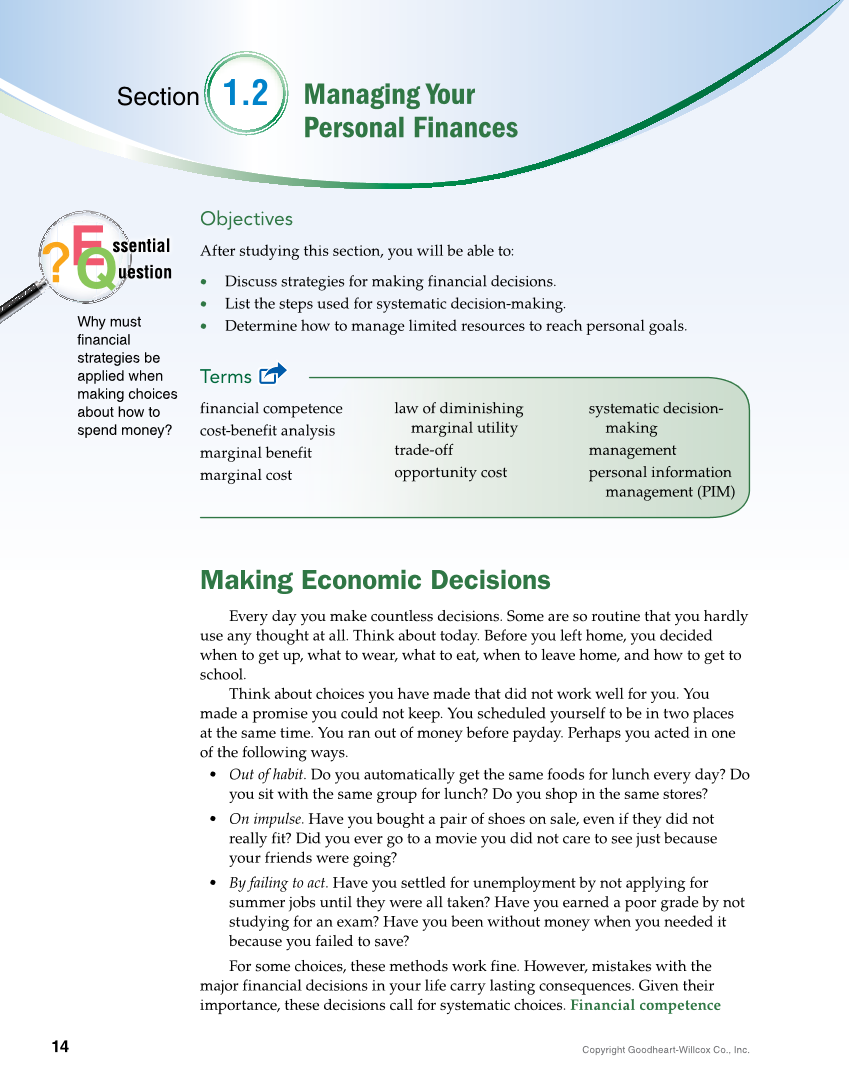Copyright Goodheart-Willcox Co., Inc. 14 E Q ssential uestion Terms Objectives After studying this section, you will be able to: • Discuss strategies for making financial decisions. • List the steps used for systematic decision-making. • Determine how to manage limited resources to reach personal goals. Section 1.2 Managing Your Personal Finances financial competence cost-benefit analysis marginal benefit marginal cost law of diminishing marginal utility trade-off opportunity cost systematic decision- making management personal information management (PIM) Why must financial strategies be applied when making choices about how to spend money? Making Economic Decisions Every day you make countless decisions. Some are so routine that you hardly use any thought at all. Think about today. Before you left home, you decided when to get up, what to wear, what to eat, when to leave home, and how to get to school. Think about choices you have made that did not work well for you. You made a promise you could not keep. You scheduled yourself to be in two places at the same time. You ran out of money before payday. Perhaps you acted in one of the following ways. • Out of habit. Do you automatically get the same foods for lunch every day? Do you sit with the same group for lunch? Do you shop in the same stores? • On impulse. Have you bought a pair of shoes on sale, even if they did not really fit? Did you ever go to a movie you did not care to see just because your friends were going? • By failing to act. Have you settled for unemployment by not applying for summer jobs until they were all taken? Have you earned a poor grade by not studying for an exam? Have you been without money when you needed it because you failed to save? For some choices, these methods work fine. However, mistakes with the major financial decisions in your life carry lasting consequences. Given their importance, these decisions call for systematic choices. Financial competence
